Sowing seeds of change through storytelling

Survey at Jaborchuk Kathoni village. Credit - Aaranyak.
Turning helplessness into collective action for coexistence on the island of Majuli, North East India
Momi Pegu* is busy. Barefoot and elegant in a vivid red mekhela sador (a traditional two-piece sarong worn in Assam), she is tending her chickens, children, and kitchen fire while weaving on a large wooden loom, underneath her home. Following the traditional architecture of the region, their house is built to withstand the annual floods that engulf their village. It has a timber frame, bamboo walls, a thatched roof and ten-foot posts holding it high above the ground.
Momi and her husband Prabhat live in Jaborchuk Kathoni, a village on the island of Majuli in the state of Assam. It is the world’s largest inhabited river island, nestled in the mighty Brahmaputra, which rises in Tibet and flows through North East India. Most rivers are thought of as female, but this one is male because its current and floods are so aggressive, isolating Majuli for 3-4 months each year.
These annual floods are a blessing and a curse, because they fertilise the soil, helping Majuli’s predominantly agricultural economy, but they are also frighteningly destructive. The same is true of elephants.
Every year before the monsoon, a herd of over 200 follow the banks of the Brahmaputra, stopping over in Majuli. There, they help themselves to the rice and maize which farmers plant for their own subsistence, and for sale. As recently as last year, the inhabitants of Jaborchuk Kathoni would barricade their homesteads with tractors and use flaming torches to chase the herd away from the fields. Two hundred elephants can devastate a crop and leave villagers destitute in a single night.
The fear and despair of villagers has been increasingly matched by the fear and desperation of the elephants, resulting in a vicious cycle of conflict. For them, the situation seemed hopeless. This year, however, things are different.
”We have not lost a single grain,” says a member of the community. Momi and her fellow villagers have harvested enough crop from the fields nearest the village to let their peripheral fields lie fallow. They are now planning to rewild those fields for elephants.

This project is managed by the British Asian Trust, with Elephant Family, and implemented by Aaranyak, a conservation NGO that is based in Assam. The project aims to convert the escalating conflict between elephants and villagers into co-existence. So far, it is working.
The key has been comprehensive community engagement, decision-making and training, supported by relevant local officials. First Aaranyak organised meetings to explain the purpose of the project and the opportunities on offer, and to collect information about the community’s crops and livelihoods, problems with elephants, and other local wildlife.
The team then conducted surveys to gather more detailed information, recruit project champions, and identify the most impoverished households. This process facilitated the critical ingredient needed for any project to succeed – relationships with communities, and collaborative decision-making. Ultimately, villagers choose their own solutions.
Aaranyak’s contribution is to raise awareness about elephants, the causes of human-elephant conflict, and ways to avoid it. With the help of local schools and student volunteers, these community-based education sessions are augmented by a lively Gajah Kotha (Elephant Stories) campaign which uses storytelling to reframe perceptions of elephants. Gradually, Human-Elephant Conflict (HEC)-affected communities have begun to recognise elephants as fellow victims of resource constraints and climate change. This reframing is sowing the seeds of a dramatic change in attitudes.
Alongside these activities, the project team also facilitates highly engaged discussions on how best to protect houses and crops, and what training community members would like to help them develop supplementary livelihoods to off-set the costs of living with elephants. This way, project interventions are tailored for each community and individual.
Every village has opted to learn how to install and manage seasonal, solar-powered electric fencing to protect their crops, but some villagers are also planting bio-fences to protect their homesteads and grain stores. These fences consist of three lines of lemon shrubs with inter-locking foliage and ferocious thorns that are effective elephant deterrents once fully grown, and the fruits yield a good income.

Each village, or cluster of villages, has also formed a Rapid Response Team to help keep elephants away from homes and vulnerable crops. Trained by Aaranyak and the Forest Department, these teams use methods that encourage elephants to become less defensive and/or aggressive. They also record sightings of elephants and other key wildlife to build up a database of their presence, absence, crop-foraging, and movements over time.
The underlying principle of our approach is to build resilience to shocks from HEC and climate change through information sharing, collaborative decision-making, capacity-building and, most important of all, empowering villagers to secure their lives and livelihoods.
As we watched Momi weave, the clak-clak of her loom was replaced by a shriek from one of her children. A large bird of prey had stolen one of her chicks. A year ago, the loss of a chick – a future breeding hen – would have been keenly felt. This time, Momi’s ‘aow’ of annoyance was followed by a resigned shrug and an invitation to lunch. Majuli villagers like to feed their guests – a long-held tradition that HEC made more difficult.
At lunch, we learned that the community had been discussing how they could help elephants now that their immediate needs had been met and they were confident that their lives and livelihoods were secure. They had decided they would rewild their peripheral fields for their former enemies and other wildlife.
All of us smiled, thrilled to hear of the community embracing co-existence, and recognising the need to protect the rich biodiversity around them.
* Name changed for privacy
Written by Belinda Stewart-Cox. For more information on this Darwin Initiative Main project 29-018, led by British Asian Trust, please click here.

 Back
Back